
|
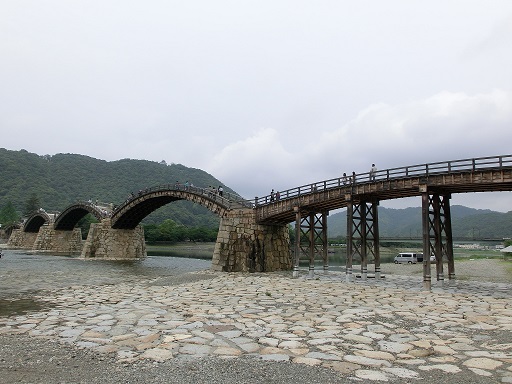
|
|
Before "Kintaikyo" bridge was built, KIKKAWA Hiroie (1561-1625) , the first feudal lord of Iwakuni, built a bridge, a couple times. But, the bridge was easily broken by flooding. KIKKAWA Hiroyoshi (1621-1679) , the third feudal lord of Iwakuni, built the first "Kintaikyo" Bridge with arch bridge architecture. It was also broken by a typhoon in 1674, but it was rebuilt with improvements. As a result, the rebuilt "Kintaikyo" Bridge remained until 1950.You will pay the admission fee to cross over "Kintaikyo" Bridge. In the Edo Age, only "Samurai", retainers of KIKKAWA Clan, and designated merchants were allowed to cross over the bridge, 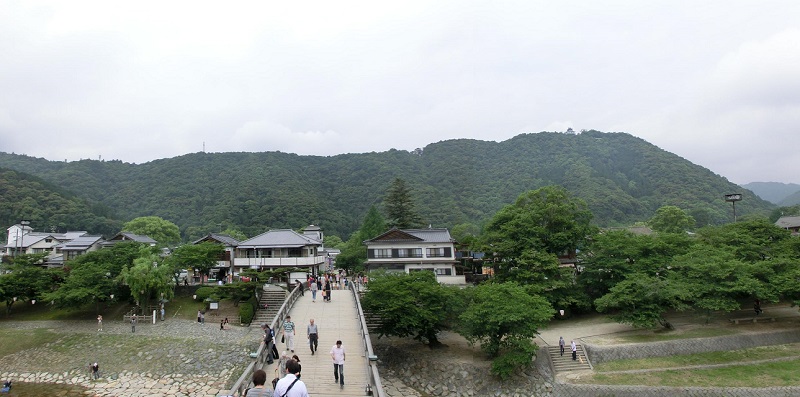
Unfortunately, the typhoon attached Iwakuni in 1950 and the flood by the typhoon carried away "Kintaikyo" Bridge. "Kintaikyo" Bridge was rebuilt as it was in 1953. 
The above picture shows the view of "Kintaikyo" Bridge after cross over from downtown side. The timberwork of the bridge is very beautiful. The total length of "Kintaikyo" Bridge is 193.3meter.
"Kikko Park"
Beyond "Kintaikyo" Bridge from downtown Iwakuni, Kikko Park is located. During the Edo Age, the government offices of Iwakuni Feudal Domain and "Samurai" Residence were locate in this area. This area is now open for the public as "Kikko" Park. You will see the statue of KIKKAWA Hiroyoshi. He built "Kintaikyo" Bridge in 1673. 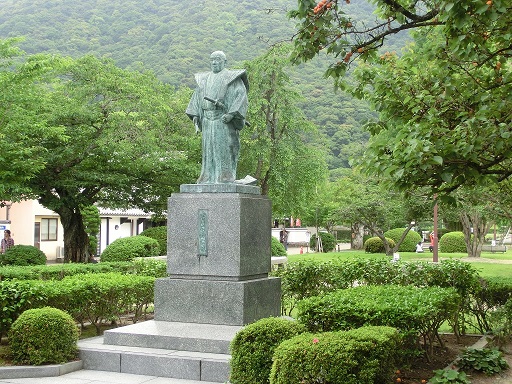
In the area of Kikko Park, the relatives of KIKKAWA Clan lived and their residences were located in the Edo Age. The gate of "KAGAWA" Clan's residence is located in the park. |
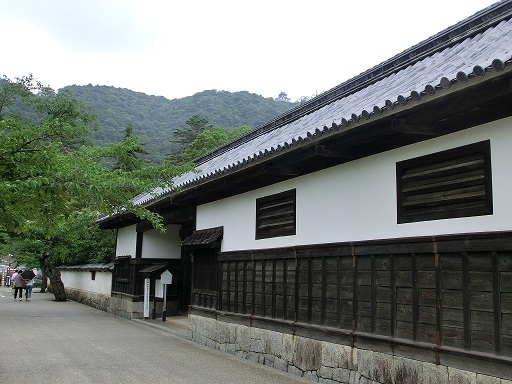
|
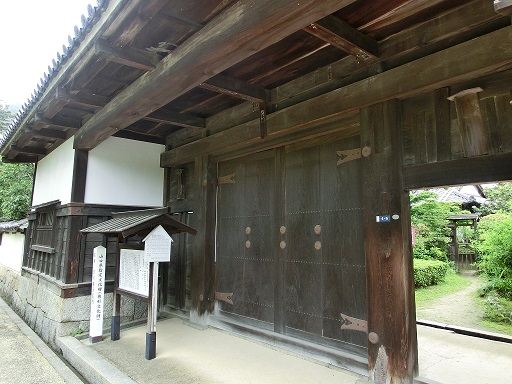
|
|
The gate was built in the middle of eighteenth century. "KAGAWA" Clan was in the chief retainer for "KIKKAWA" Clan, who was the feudal lord of Iwakuni. The gate is very gorgeous. The below picture shows "MEKATA Residence". 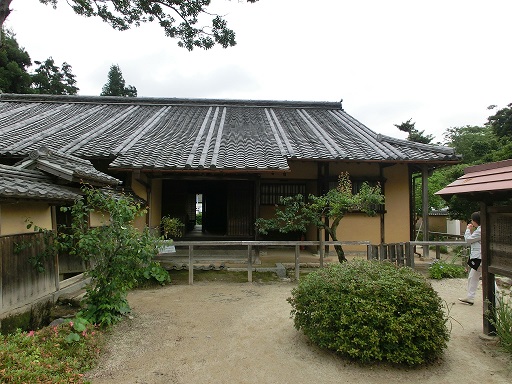
This "Samurai" residence was the residence of MEKATA Clan. MEKATA Clan were middle class retainers for KIKKAWA Clan. The residence was built in the middle of the eighteenth century and it is designated as an important property of Japan. In the middle of "Kikko" Park, a fountain in located. The modern fountain and the historical residences are well matched. You will see the main castle tower of Iwakuni Castle. 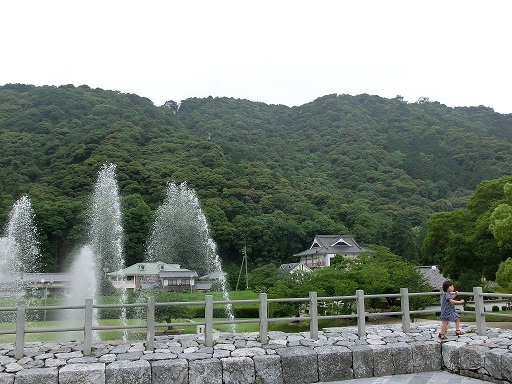
To the north from the fountain, the feudal government offices were located in the Edo Age beyond the inner moat. This area was named "Odoi". 
The south turret was located in this place in the Edo Age. 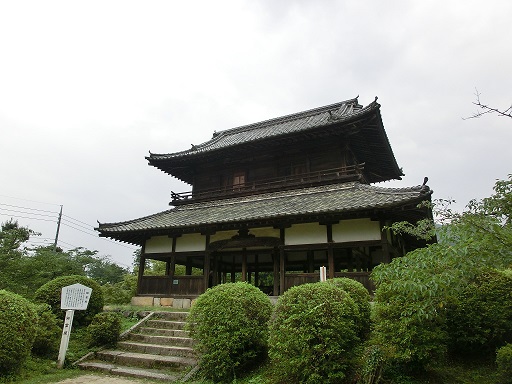
The building is named "Kinunkaku". It was built in 1885, when "Kikko" Park was open for the public. It looks like a turret of a castle.
"Kikko Shrine"
To the north west of "Kikko" Park, "Kikko" Shrine is located. "Kikko" Shrine was built in 1728 to enshrine the KIKKAWA Clan. 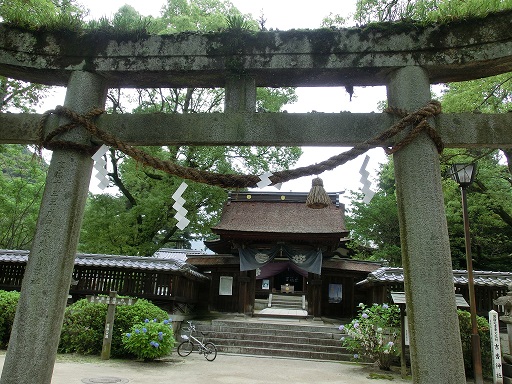
The shrine buildings were moved to the site of the KIKKAWA Residence in 1885. Behind the shrine gate, the main shrine building is located. |

|
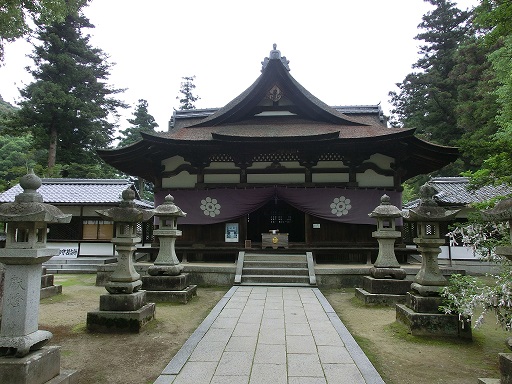
|
|
The shrine buildings are designated as important properties of Japan. 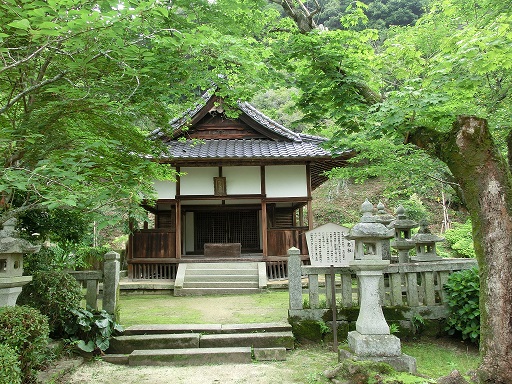
In "Kikko" Shrine, "Hochusha" Hall is located. It was originally built by KIKKAWA Hiroie (1561-1625) as the Mausoleum of the KIKKAWA Clan.
"Mausoleums of the KIKKAWA Clan"
To the south of the "Kikko" Park, the Mausoleums of the KIKKAWA Clan are located. The KIKKAWA Clan was originally the local lord in "Sunpu" Province, the present-day Shizuoka Prefecture. They moved to "Aki" Province, the present-day Hiroshima Prefecture, in the Kamakura Age (1185-1333) . KIKKAWA Hiroie (1561-1625) was the first feudal lord of Iwakuni. The KIKKAWA Clan governed Iwakuni Area until 1871, when KIKKAWA Tsunetake (1855-1909) , the thirteenth generation, was the feudal lord.The Mausoleums are surrounded by white clayey walls. The gate of the Mausoleums is located to the south east of the Mausoleums. After passing through the gate, you will see other white clayey walls. |
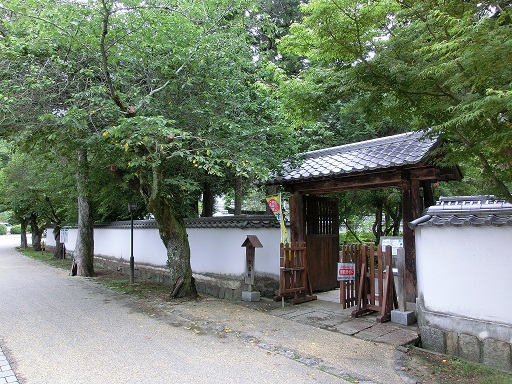
|
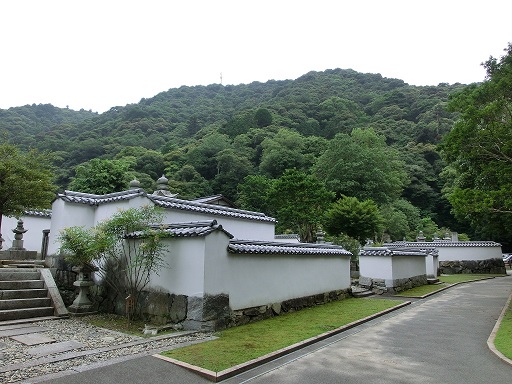
|
|
In this area, eleven Mausoleums of feudal lords are located, except the Mausoleums of KIKKAWA Tsgunenaga (1714-1764) , the sixth generation, and KIKKAWA Tsunetake. Each Mausoleum is surrounded by white clayey walls.Near the entrance gate, first you will see the Mausoleums of KIKKAWA Tsunetada (1766-1803) , the eighth generation, and his legal wife, Kyoshoin.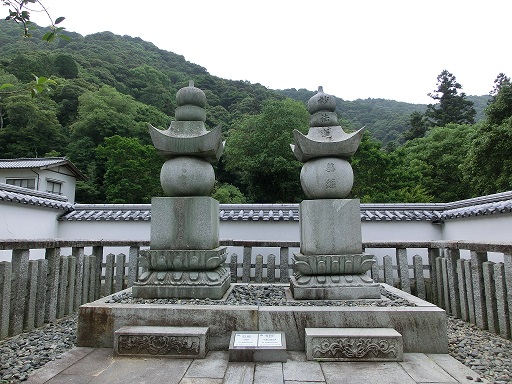
From the Mausoleums of KIKKAWA Tsunetada and his legal wife, you will walk to the north on a pathway between Mausoleums. You will feel spiritual atmosphere. |

|

|
|
To the north end of this area, three Mausoleums are located. They are the Mausoleums of KIKKAWA Hiromasa (1601-1666) , the second generation, his legal wife Kogenin and KIKKAWA Hiroyoshi (1621-1679) .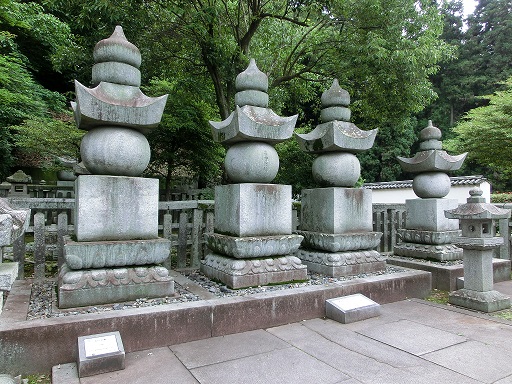
Nine Mausoleums of the feudal lords are located on the foot of Mt. Shiroyama. Other two Mausoleums are located on a hillside. After walking up stairs, you will see the Mausoleums of KIKKAWA Tasunemasa (1829-1867) , the twelfth generation and the first official feudal lord of Iwakuni.
Iwakuni Area became the official feudal domain in 1868. As Iwakuni government did not tell the death of KIKKAWA Tasunemasa to Edo Bakufu, the central government in Japan during the Edo Age, KIKKAWA Tasunemasa became the first feudal lord of Iwakuni. Steep stairs continues to the Mausoleums of KIKKAWA Hiroie (1561-1625) , the first generation.
The Mausoleums of KIKKAWA Hiroie is located on the lonely hillside. 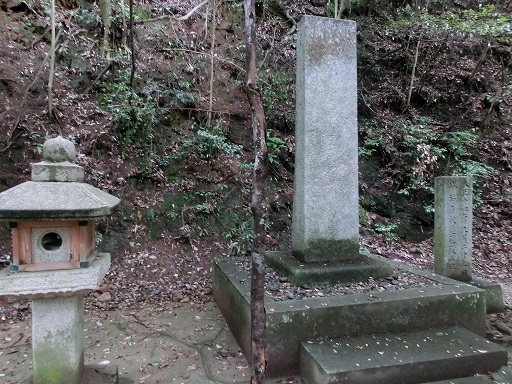
KIKKAWA Hiroie made great roles and achievements for MORI Clan, who were the feudal lard of Choshu Domain, after the battle of Sekigahara in 1600. Please refer the page of "Iwakuni Castle" for the detail information of KIKKAWA Hiroie: http://handejapan19.html.xdomain.jp/TravelDestinations/Chugoku/Iwakuni_Castle_E.html However, people in Choshu domain thought what KIKKAWA Hiroie did at the battle of Sekihgahara were the reasons why the territories of MORI Clan were reduced one fourth, to the area of present-day Yamaguch Prefecture. |
|
How to get there
Official English Website: Other Historical Sites near by:
|
 Home Page in Japanese: "Shane's HomePage"
Home Page in Japanese: "Shane's HomePage"